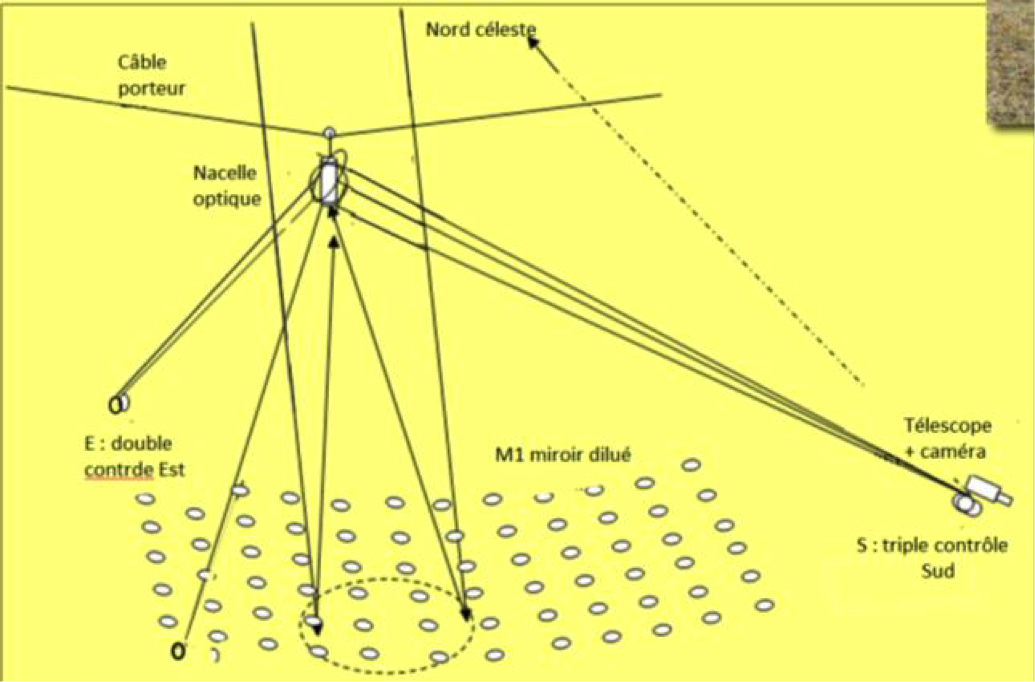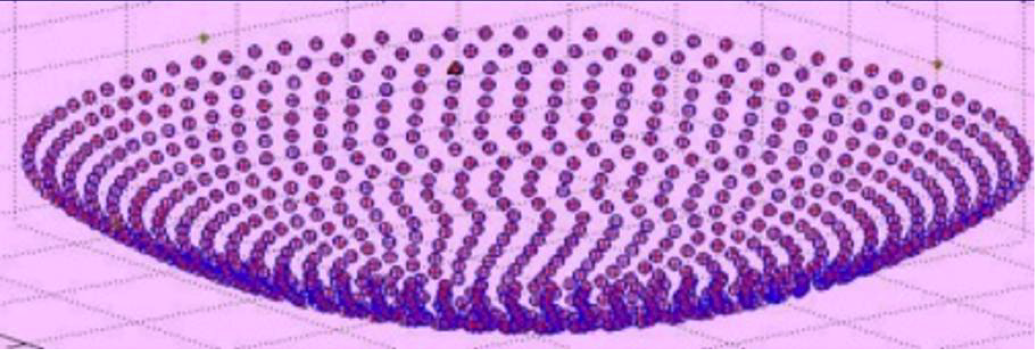Due to its Carlina-type architecture – several small mirrors arranged on a large spherical surface- the hypertelescope achieves an angular resolution equal to that obtained with a small number of large monolithic mirrors (VLTI, CHARA).
 |
 |
 |
|
VLTI VLTI -Paranal Observatory ©ESO
|
Ubaye’s hypertelescope configuration (type Carlina)
|
Arrangement of small mirrors on a spherical surface
|
The hypertelescope’s focal device produces an instantaneous direct image and not an image reconstructed after calculations made from successive images. Unlike conventional interferometers having few apertures, which require multiple observations at different times for reconstructing images by Fourier synthesis, the more numerous apertures of the hypertelescope, exploited simultaneously, improve the sensitivity and information content in the direct image.
Since the hypertelescope doesn’t require the construction of delay lines, the number of small interfering mirrors is not limited (many tens or hundreds), which is not the case of current interferometers. Compared to interferometers of equal diameter that use few apertures and repeated observations, the hypertelescope may allow to observe fainter stars. This is possible provided that atmosphere distortion problems are resolved or that the instrument observes in space.
With the same diameter, and therefore equal angular resolution, the cost of the hypertelescope is immeasurably smaller than that of a monolithic telescope.


